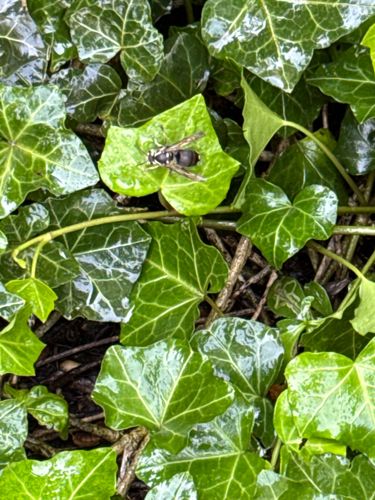Yellowjacket (likely common or eastern yellowjacket)
Scientific Name: Vespula spp. (e.g., Vespula vulgaris or Vespula maculifrons)
Order & Family: Order: Hymenoptera, Family: Vespidae
Size: Typically 10-16 mm (0.4-0.6 inches) for workers; queens are larger.

Natural Habitat
Yellowjackets are common in a variety of habitats, including forests, urban areas, gardens, and agricultural lands. They prefer areas with readily available food sources and suitable nesting sites, such as underground burrows, tree cavities, or sheltered spots in man-made structures.
Diet & Feeding
Adult yellowjackets feed on nectar, fruit, and other sugary substances. They are also predatory, hunting various insects, spiders, and even carrion to feed their larvae, which require protein.
Behavior Patterns
Yellowjackets are social insects living in colonies that can number in the thousands. They build nests from chewed wood fibers, often underground, in shrubs, or in cavities within structures. Workers forage for food, care for the larvae, and expand the nest. They are known for their aggressive defense of the nest if disturbed. Only fertilized queens survive the winter to start new colonies in the spring.
Risks & Benefits
Risks: Yellowjackets can be aggressive, especially if their nest is disturbed, and their stings are painful and can cause allergic reactions in sensitive individuals. They can also be a nuisance at outdoor gatherings where food is present. Benefits: They play a role in pest control by preying on various insects, including some agricultural pests. They can also aid in pollination by visiting flowers for nectar.
Identified on: 8/16/2025